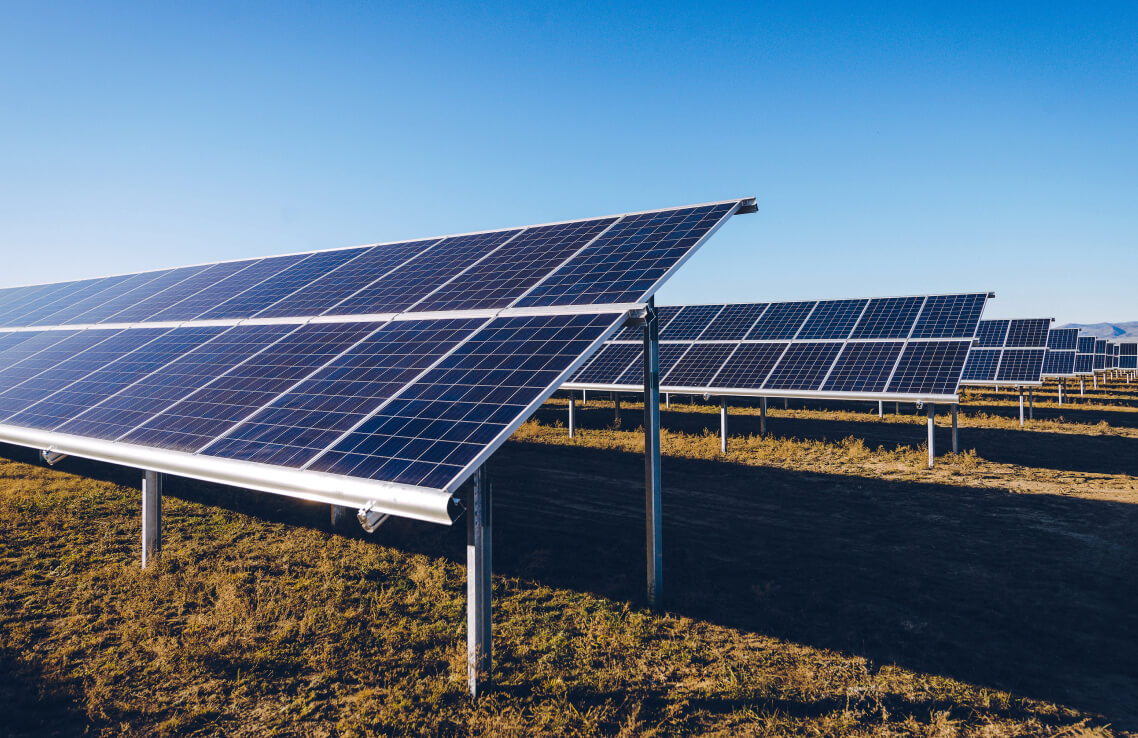Private equity and strategic investors are always looking for the next big opportunity. They analyze trends, evaluate risks, and try to determine where the smart money is going.
For decades, oil and gas were considered a safe bet. They powered the world and drove massive profits. But times are changing. Renewable energy is on the rise, and investors are taking notice.
A total of $1.7 trillion will be spent on clean energy projects in 2023. Private equity investment in renewable energy and cleantech surged to over $26 billion in 2022. Solar and wind are outpacing fossil fuels for new power generation. As costs have plummeted, renewables have become more economically viable.
The economics of renewable energy are improving
As an investor, the economics of renewable energy are becoming increasingly appealing:
- The cost of solar panels has dropped over 80% since 2010. Solar is now the cheapest source of new electricity in many parts of the world.
- The cost of wind power has also fallen by around 50% over the last decade. According to Lazard, a leading financial advisory firm, wind and solar are now the two cheapest sources of new electricity generation in the U.S.
- Battery technology. Improvements and cost declines in battery technology have made renewable energy storage possible.
- Government policies. ax incentives, rebates, and renewable energy targets have helped drive growth in the renewable energy market. Over 150 countries have renewable energy targets and policies in place.
- There is increasing recognition that climate change poses huge economic costs and risks. Investing in renewable energy mitigates these costs and risks. A transition to renewable energy could save the global economy trillions of dollars according to some estimates.
Policy actions driving sustainable, low-carbon power
With strong government support through financial incentives, mandates and policy changes worldwide, renewables have become increasingly attractive investments compared to oil and other fossil fuels.
- Investment Tax Credit (ITC) and Production Tax Credit (PTC). Tax incentives like ITC and PTC in the U.S. reduce the cost of renewable energy projects and generation, spurring development. The ITC offers a tax credit for solar and geothermal systems, while the PTC provides tax credits for wind and other technologies.
- Renewable Portfolio Standards (RPS). RPS require utilities to source a certain percentage of electricity from renewables. As of 2021, 29 states have mandatory RPS and 8 states have voluntary goals. RPS stimulate demand and fund new renewable projects.
- Feed-in tariffs guarantee renewable energy producers a fixed price for the electricity they generate and feed into the grid. Governments offer long-term contracts for energy from renewables like solar and wind. This incentive reduces risk for investors and accelerates adoption.
- Competitive procurement encourages renewable development through auctions and tenders. Governments solicit bids for renewable energy and award long-term power purchase agreements to the lowest bidders. This market-based mechanism has significantly reduced costs.
- Bans and targets for fossil fuels are also driving the transition to renewables. Some countries have banned oil-fired power plants and coal mining or set targets for phasing them out. This policy-driven shift is propelling investments in solar, wind and other alternative energy sources.
- Solar energy. In the U.S., the solar investment tax credit has been instrumental in the expansion of solar energy and the European Union’s emissions trading system has also made renewable energy more competitive.
Technological improvements are driving down costs
Technological improvements in renewable energy generation and storage have significantly reduced costs, enabling renewable energy to compete economically with fossil fuels.
Smart grids and digital technologies
Modernization of electrical grids into “smart grids” with advanced meters, sensors, and software has enabled greater integration of renewable energy. Smart grids can instantly respond to changes in renewable energy supply and demand, routing power efficiently where it’s needed. They also provide utilities with more insight into the performance and costs of renewable energy systems.
As a result, investor confidence in renewables is growing
Investor confidence in the renewable energy sector has been steadily growing as the technologies have improved, costs have declined, and concerns over climate change have intensified.
According to Bloomberg New Energy Finance, global investments in clean energy rose to $332.1 billion in 2019, surpassing fossil fuels for the fifth year in a row.
Many major investment firms, such as for example BlackRock, have pledged to divest from fossil fuels in favor of renewable energy. This trend is expected to accelerate in the coming years, supported by the fact that:
- Renewable energy investments are seen as a growth industry with strong long term prospects
- Fossil fuel investments are riskier due to volatile oil prices and the possibility of assets becoming stranded
- Younger investors, in particular, prefer to invest in ethical companies focused on environmental and social impact
The deep connection between climate change and economy
The effects of climate change are too dire to ignore
The effects of climate change are becoming too catastrophic to ignore. As global temperatures rise, extreme weather events are increasing in frequency and severity, sea levels are rising, and natural disasters are displacing millions of people.
Volatility and uncertainty
The oil industry is prone to market volatility from geopolitical events, natural disasters, and other factors that can quickly disrupt supply and demand.
Environmental and social governance
There is growing pressure from shareholders, regulators, and the public for companies and investors to consider environmental, social and governance (ESG) factors. The oil industry scores poorly on ESG due to pollution, carbon emissions, and the impact of climate change. In contrast, renewable energy investments are well aligned with ESG principles and sustainable business practices. For investors, renewable energy projects are an opportunity to gain ESG exposure and meet sustainability goals.
Countries aim for energy independence
Many countries rely heavily on imported oil and natural gas, leaving them vulnerable to supply disruptions and price spikes. By transitioning to domestically-produced renewable energy, countries can gain energy independence and security. For example, China now leads the world in solar panel production and has enough solar capacity to power its largest city, Shanghai. Morocco will soon get over half its electricity from solar and wind. Costa Rica already runs on over 95% renewable energy.
Major oil companies like BP and Shell have invested billions in renewable energy projects and technologies. Google, Amazon, and other tech giants also invest heavily in wind and solar to power their data centers and operations. While the transition is happening gradually, the pace is accelerating. The companies and countries that move fastest to adopt renewable energy will be best positioned to thrive in a low-carbon future. Overall, the rise of renewable energy is a trend that will only continue to grow.




